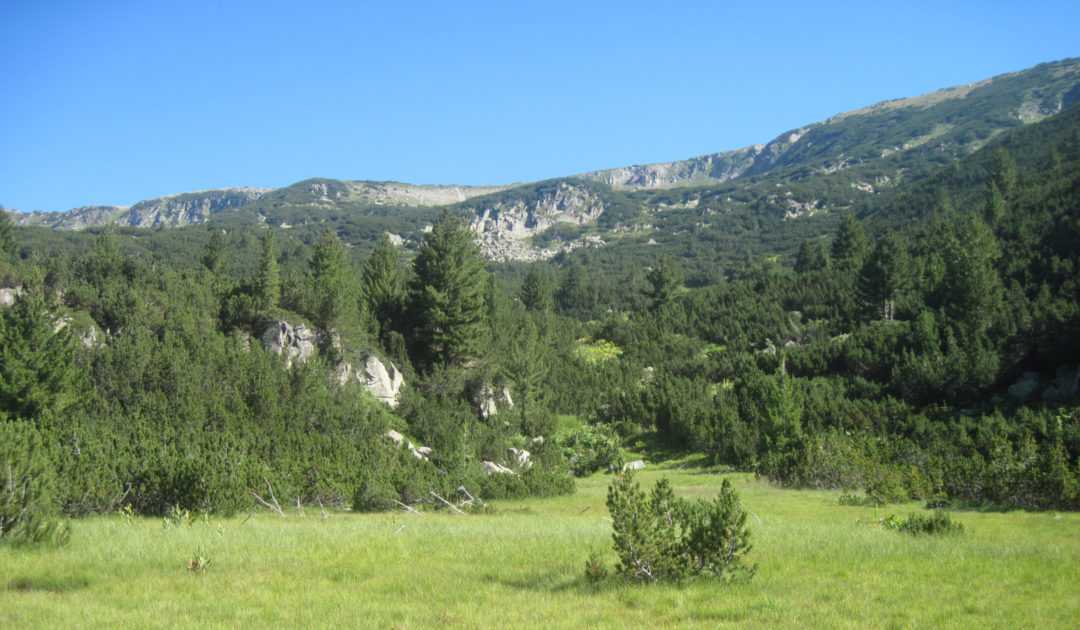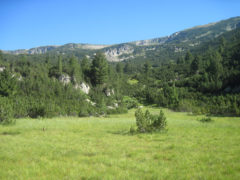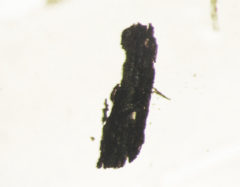On a Downward Slope: An Increase in Forest Fires Threatens Spruce and Fir Trees in Southeastern Europe
In the event of a forest fire, spruce trees and white firs burn up like torches and it takes a long time for them to grow back in burnt areas. As climate change leads to a significantly increased risk of wildfires in many areas across Europe, spruces and white firs might have a harder time regenerating in regions affected by more frequent and intense conflagrations. They could be increasingly replaced by pioneer species such as birches and alders, which benefit from an increase in fires, scientists from the German Senckenberg Gesellschaft für Naturforschung and the Goethe University in Frankfurt reported recently in the “European Journal of Forest Research.”
What our future forests will look like is a burning question not only for fire ecologists. A look back at 12,000 years of forest fire history now reveals: “Climate roughly defines the general trends of fire activity. However, the intensity and frequency of fires also strongly depend on the properties of the predominant vegetation type. While certain species contribute to the occurrence of severe fires, others act more or less as a fire retardant,” says Dr. Mirjam Pfeiffer of the Senckenberg Biodiversity and Climate Centre, summarizing the results of a recent study.
The study area is located in the Rila Mountains of southwestern Bulgaria. A sediment core was extracted from a bog at about 2100 m elevation, which documents the wildfire history in this location. The tiny charcoal particles in the sample indicate how often and how intense the fires in the area were during the past 12,000 years. Based on fossil pollen, the scientists were also able to determine which tree species dominated the landscape at various times and which were mostly affected by fire.
The study’s lead author, Dr. Angelica Feurdean of the Goethe University, explains, “About 12,000 to 9,000 years ago, the area burned rather frequently; however, the fires usually had a low intensity. This was aided by a climate with hot summers and low that grow back particularly fast after a fire. In addition, pines were able to survive forest fires of low to medium intensity due to their thick bark and their crown structure.”
Rainfall increased and the summers became cooler in the area between 9,000 and 4,000 years ago. The breaks between the individual fire events increased, and weak forest fires occurred in turn with very intense ones. This benefited the trees more sensitive to fire such as spruces and white firs as well the fire-resistant Scots pines, mountain pines and Balkan pines. Birches and other pioneer species began to recede.
Cool and wet summers during the past 4000 years, combined with forest clearing to create pastures, lowered the treeline. With cold climate and less biomass to burn the frequency of fires decreased even more. Today, the fire-resistant pine species dominate the study area, and pioneer species are on the rise. Spruce and white fir have not yet recovered following disturbance by fire and clearing. This forest composition is expected to prevail in the future under increased drought and wildfire risk.
For the authors, the new findings suggest an approach to identify forests best adapted to increasingly frequent fires in the future. Pfeiffer comments, “Spruce monocultures are particularly prone to burning. To meet the challenges of the new fire regime, the replanted forests should contain a mix of fire-resistant species, in order to minimize the risk of extensive wildfires.
Publication
Feurdean, A., Tonkov, S., Pfeiffer, M. et al. (2019): Fire frequency and intensity associated with functional traits of dominant forest type in the Balkans during Holocene, European Journal of Forest Research, doi: 10.1007/s10342-019-01223-0


